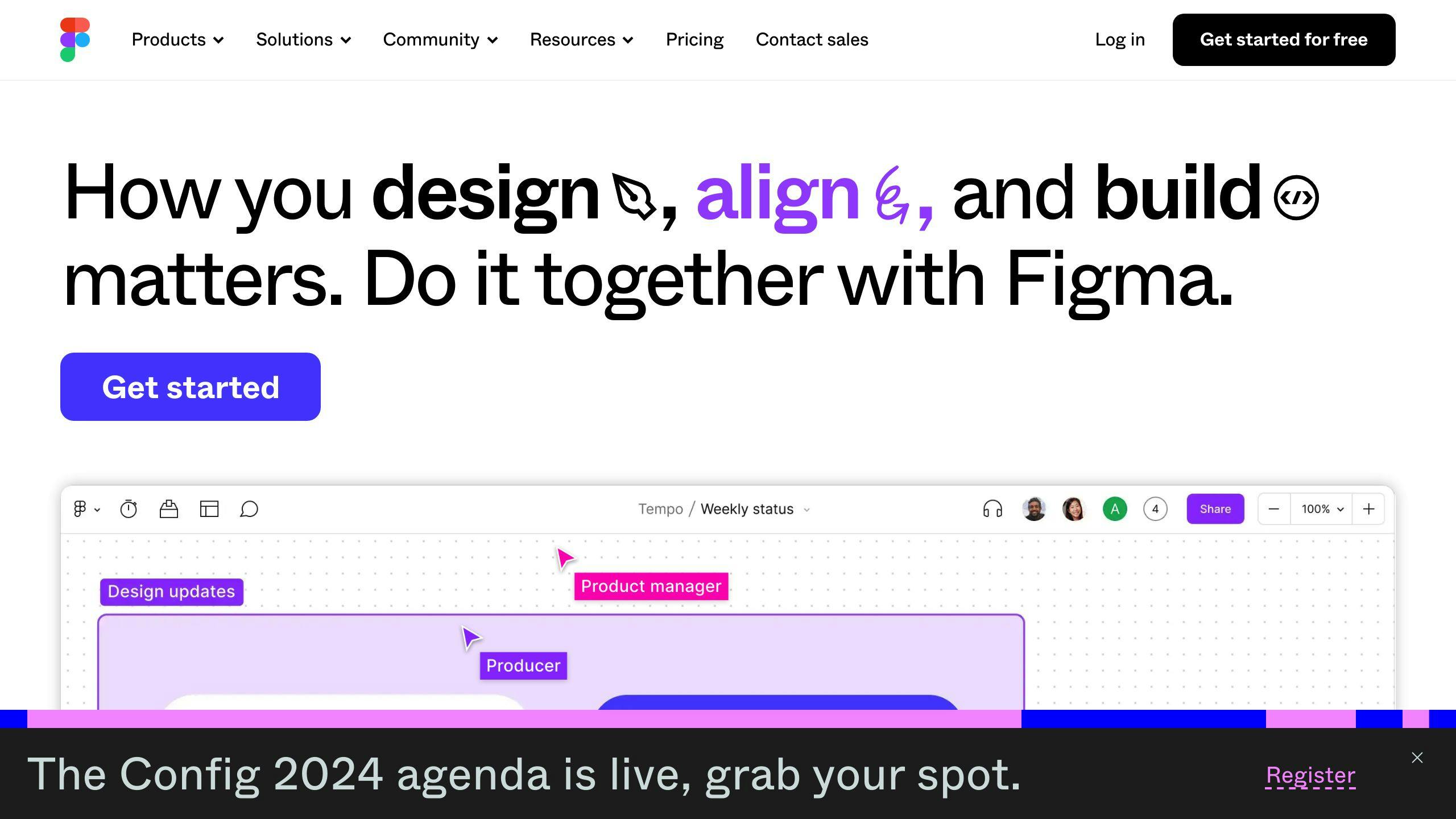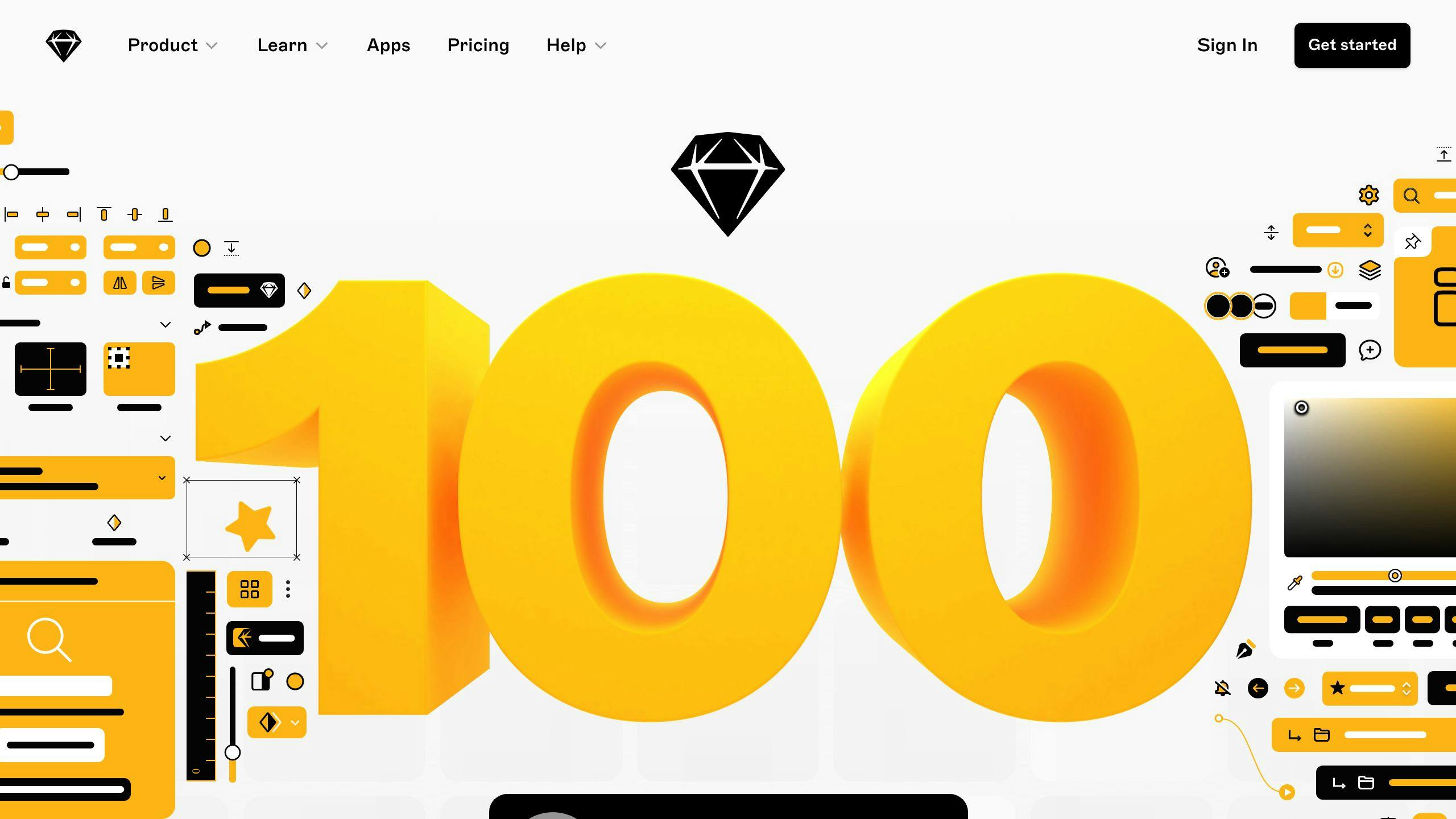
13 min read
[ Category ]
Business
[ Date ]
Nov 26, 2024
The Ultimate Guide to Product Design for Startups
Product design is crucial for startups to create user-friendly, scalable products that align with business goals. This guide covers everything you need to know, from research to launch. Here’s a quick overview:
Why Product Design Matters: It improves user experience, boosts growth, and minimizes risks.
Key Challenges: Limited budgets, time pressures, and scarce resources.
Design Process:
Top Tools: Figma, Webflow, and Framer for design and prototyping.
User-Centered Design: Focus on user research, usability testing, and feedback loops.
Takeaway: Start small, use the right tools, and continuously improve your product based on user needs. This guide provides actionable steps to help startups succeed in product design.
Complete Website Design Process for Startups using Figma and Webflow

The Product Design Process for Startups
A clear product design process helps startups make the most of their resources while building products that resonate with users. It typically unfolds in three main phases:
1: Research and Discovery
This phase lays the groundwork by identifying user needs and market gaps. It involves gathering targeted data through user interviews, competitor analysis, and market research.
Here’s how to keep it cost-effective:
Talk to 5-10 potential customers to understand their needs.
Study 3-5 competitors to analyze their strengths and weaknesses.
Look at customer support data and analytics for existing insights.
Build user personas based on the findings.
These insights serve as a guide for the next steps, ensuring your designs address real problems.
2: Prototyping and Testing
This is where ideas take shape. Prototypes let you test concepts and gather feedback before committing to full development. Tools like Figma or Framer are great for quick iterations.
Steps to Follow:
Start with wireframes to map out the structure.
Create interactive prototypes to simulate user interactions.
Add visual design elements to refine the look and feel.
Testing these prototypes with users helps identify what works and what doesn’t.
3: Iteration and Launch
In this final phase, you refine the product based on user feedback and prepare for launch.
Refining with Data:
Conduct A/B tests to compare features.
Track engagement metrics to see how users interact with the product.
Collect feedback systematically to guide improvements.
Getting Ready to Launch:
Ensure the design is consistent across all user touchpoints.
Align technical details with your brand identity.
Plan a phased launch to manage risks and gather early feedback.
The focus here should be on releasing a strong minimum viable product (MVP). Instead of aiming for perfection, launch with a solid foundation and improve based on how users respond. Flexibility is key - be ready to make quick adjustments while staying aligned with your business goals.
Tools and Resources for Startup Product Design
Choosing the right tools can make your product design process smoother and more efficient while keeping expenses under control. Here's a breakdown of tools that align with the key phases of product design - from research to launch.
Design Tools: Figma, Sketch, Adobe XD

For startups working toward an MVP, it's important to pick design tools that fit your team's workflow and can grow with your needs:
Figma: A go-to for collaborative interface design, featuring real-time editing and a free tier, with paid plans starting at $12 per user per month.
Sketch: A Mac-exclusive tool with over 1,000 plugins to automate tasks and enhance UI design workflows.
Adobe XD: Perfect for teams already using Adobe Creative Cloud, offering seamless integration with other Adobe tools.
Prototyping Tools: Framer, InVision

Prototyping tools help transform static designs into interactive experiences. Framer is great for creating complex prototypes with its developer-friendly CSS integration. On the other hand, InVision simplifies the feedback process, making it easier to gather input from stakeholders.
Website Builders: Webflow, Squarespace

Launching a website quickly without sacrificing design quality is crucial for startups. Website builders like these can help:
Webflow: Offers advanced design control and CMS features, making it ideal for content-heavy platforms. Plans start at $12 per site per month, providing a cost-effective alternative to custom development.
Squarespace: A simpler option with an intuitive interface and professionally designed templates. While it’s less flexible than Webflow, it’s perfect for getting a polished site up and running fast.
Using these tools effectively will set the stage for applying user-centered principles, which we'll cover next.
Key Principles of User-Centered Design for Startups
User-centered design is critical for building products that people love. In fact, 85% of companies report higher customer satisfaction after adopting these practices [5]. For startups with limited resources, balancing user needs with business goals requires careful planning and smart decisions.
Conducting User Research on a Budget
You don't need a huge budget to gather meaningful user insights. Many successful startups use these affordable tools:
Google Forms: Perfect for surveys and collecting feedback, with no limits on responses.
UserTesting.com: Pay-per-test pricing makes it accessible for moderated user testing.
Maze: Great for prototype testing, with a free tier to get started.
These tools help you gather actionable insights without breaking the bank, complementing the discovery methods discussed earlier.
Developing User Personas and Journey Maps
User personas are more than just demographic profiles - they're about understanding behaviors, goals, and motivations. As usability expert Jakob Nielsen puts it:
"The best products come from understanding users deeply - not just their demographics, but their goals, behaviors, and motivations" [2].
To create effective personas:
Combine analytics data with user interviews to understand patterns and preferences.
Use this information to map out user journeys, highlighting key decision points and pain points.
This approach ensures your personas are grounded in real user behavior, not assumptions.
Usability Testing for Startups
Once you’ve created personas, usability testing should be an ongoing process. Leverage prototyping tools like Figma or Adobe XD (as covered in Section 3) to streamline your testing efforts.
Key testing stages include:
Early Design: Test paper prototypes weekly to validate initial concepts.
MVP Development: Use interactive prototypes and test bi-weekly to refine functionality.
Pre-Launch: Conduct beta testing over 2-4 weeks to gather final feedback.
Keep feedback loops open throughout development to ensure your product evolves based on user input. By following these steps, startups can create products that not only meet user expectations but also support business growth [3].
Design Strategies for Startup Growth
Creating Scalable Products
Building products that can grow with your business starts with a modular design system. Take Airbnb, for example - their component-based approach speeds up feature launches while keeping things consistent across platforms.
Here are three key areas to focus on for scalability:
Design Systems: Create a shared library of components for consistency.
Flexible Architecture: Use code structures that can evolve as needed.
Performance Optimization: Make sure your product can handle more users without breaking down.
This structured approach ties back to prototyping tools like Framer and InVision, which help lay the groundwork for these scalable systems.
Using Data for Design Decisions
Turning metrics into actionable insights is the heart of data-driven design. By analyzing the right data, you can refine your product and make meaningful updates.
For example, Instagram’s redesign from a cluttered photo-sharing app to a sleek, single-tap camera interface resulted in a 300% boost in user engagement during its first year [6]. This transformation highlights the power of combining data with design.
Leveraging Branding for Growth
Strong branding isn’t just about visuals - it’s about creating a cohesive experience. Slack’s 93% retention rate is a great example, driven by its memorable interface and relatable tone [4].
"The best products come from understanding not just what users need, but how they want to feel when using your product", says a UX designer at IDEO [1].
To build a brand that fuels growth, focus on these elements:
A consistent visual identity
A clear and unique brand voice
Intuitive and reliable interaction patterns
These strategies ensure that your product not only meets user needs but also resonates with them emotionally.
Partnering with Agencies like Offlens Studio
Startups often need expert assistance that goes beyond tools and internal processes (as discussed in Sections 3-5). Working with specialized agencies can help fill that gap. Agencies like Offlens Studio offer a practical solution for scaling design efforts without the need for a full in-house team. They focus on startups and use tools like Figma, Framer, and Webflow to provide:
Quick task completion (typically within 24-72 hours)
Unlimited revisions
Full NDA protection
Dedicated design support
Their expertise in Framer and Webflow aligns perfectly with the user testing workflows mentioned in Section 4, helping startups implement user-focused design efficiently.
Offlens Studio Plans and Pricing
Offlens Studio offers flexible plans designed to accommodate the tight budgets startups often face (referenced in Section 1). These plans make it easy to scale based on your needs:
The Pro plan is a great choice for startups with urgent deadlines or multiple projects running at once. One standout feature is the ability to pause or resume your subscription as needed, giving you more control over design expenses during different stages of growth.
Conclusion: Mastering Product Design for Startup Success
Product design plays a crucial role in determining whether a startup's product connects with its audience or struggles to find its footing. A user-first design strategy, as explained in this guide, can be the key to standing out.
Key Takeaways
Creating effective product designs for startups rests on three main pillars: iterative processes, modern tools, and a strong focus on users.
Iterative Design Process: This approach emphasizes learning through small, incremental improvements. It allows startups to quickly validate ideas while conserving resources.
Tools and Resources: Platforms like Figma, Framer, and Webflow are excellent for quick prototyping and revisions, helping startups maintain momentum.
User-Centered Focus: Every design decision should prioritize the end user. Incorporate user research, feedback, and testing throughout development to ensure your product aligns with your audience's needs.
These principles tie back to the strategies and tools discussed earlier, reinforcing the importance of keeping users at the core of your design efforts.
Next Steps for Startups
To move forward effectively, startups can follow these steps:
Start Small, Think Big: Begin with thorough user research and basic prototypes, but always plan for scalability.
Use the Right Resources: Tools like Figma and Webflow, along with agency partnerships (e.g., Offlens Studio), can streamline your process. Be mindful of your budget when choosing resources.
Commit to Ongoing Improvement: Schedule regular user testing and data analysis - every two weeks is a good starting point. This helps refine your product and ensure it aligns with market demands.
Keep in mind, product design isn’t a one-and-done task. It’s an evolving process that requires constant attention to user needs, smart use of tools, and a structured, adaptable approach. With these strategies, startups can build products that grow alongside their users and the market.
FAQs
How much does Framer Webflow cost?
If you're deciding between Framer and Webflow, here's a quick look at their pricing:
Both tools also offer free trials, making it easier to test them out before committing.
The choice depends on your needs: Framer is ideal for creating interactive prototypes, while Webflow is better suited for building production-ready websites. Some startups might qualify for discounts, so it's worth checking!






